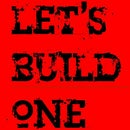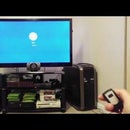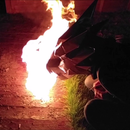Introduction: How NOT to Build a Valved Pop-Pop Boat
The Problem
Pop-Pop Boats are notoriously inefficient for many reasons but the main problem is the action by which it moves forward.
The Explanation
Exhaust
When the engine pops it squirts water out of the exhaust. This water travels almost straight out with little divergence.
Intake
When the engine sucks in fresh water it sucks from all around the inlet. The water sucked in from the sides should be symmetrical so they sum to zero but approximately a third of the water in taken comes from the same vector as the exhaust squirted which cancels out say a third or more of the forward thrust when the net product is found.
The Solution
Put valves on the engine so that it sucks from the front and blows out the back potentially quadrupling the forward net thrust!
Pop-Pop Boats are notoriously inefficient for many reasons but the main problem is the action by which it moves forward.
The Explanation
Exhaust
When the engine pops it squirts water out of the exhaust. This water travels almost straight out with little divergence.
Intake
When the engine sucks in fresh water it sucks from all around the inlet. The water sucked in from the sides should be symmetrical so they sum to zero but approximately a third of the water in taken comes from the same vector as the exhaust squirted which cancels out say a third or more of the forward thrust when the net product is found.
The Solution
Put valves on the engine so that it sucks from the front and blows out the back potentially quadrupling the forward net thrust!
Step 1: The Plan
With the concept set the principles of operation are simple. All that remains is to design an appropriate way of implementation.
Valves
These only have to be one way and should require no return so should take little force to open. I went straight for the shuttle valve. I found the smallest reasonably sized ball bearings I could and designed the valves around them so they would close from one side and free flow the other. Then, they would be mounted to allow free sucking from the front, no blow and free blow on the back, no suck. The ball bearings where 6mm steel.
Exhaust and Intake
I know through my research that the number of tubes is essentially irrelevant. One tube can work as effectively as two or more. The aspect to be considered is surface friction. As the output of the engine has an optimum cross sectional area the way to attain the least losses is to have one tube of the required diameter. Since I want to split the input and output I needed two tubes, one in the front for intake, one out the back for exhaust. I decided to have them both of the same diameter copper pipe of around 6mm internal diameter (1/4") To fit my valves.
calculated from working engines boiler size to tube cross sectional area ratios.
Engine Type
Here I have two choices, the simple coil boat or the difficult to seal pop pop boat.
Coil Engine
There is a minimum radius to which you can bend a pipe without flattening or crimping it. My quarter inch copper pipe dictated that the coil would be rather large in diameter and hence hard to package in a boat hull of the size I was envisioning. I also know through research that pop-pop boats don't work well at larger volumes as the inertia of the water displaced with each cycle limits the frequency of operation to a point where there is little if any or the motion can be rather sporadic. This meant the internal volume of the coil that would form my boiler may be too large.
Classic Pop-pop Engine
These are simplest when constructed out of steel beverage cans. Instructions on how to do this are on the internet and I dare say here on Instructables. If you have trouble finding them, send me a message or e-mail and I'll either add a link here or send you the link. This would be good but the boiler needs to be at a fairly horizontal angle to catch the heat from the heat source. A vertical boiler would receive little to no heat as heat rises. This would mean that complex bends would be required to get the engine in the middle of these two pipes going on opposite directions. Fluid dynamics say that corners are bad as far as resistance and efficiency goes so this would not be optimal.
This left a completely fabricated boiler of my own design which was in the same size ratio as the smaller commercial pop-pop boats that you can buy but with an in line intake/exhaust orientation which made sense to me for the intake/exhaust placement I was envisioning.
Conclusion
Steel shuttle valves with a 1/4" copper pipe intake/exhaust and a conventional boiler with slight modifications.
Valves
These only have to be one way and should require no return so should take little force to open. I went straight for the shuttle valve. I found the smallest reasonably sized ball bearings I could and designed the valves around them so they would close from one side and free flow the other. Then, they would be mounted to allow free sucking from the front, no blow and free blow on the back, no suck. The ball bearings where 6mm steel.
Exhaust and Intake
I know through my research that the number of tubes is essentially irrelevant. One tube can work as effectively as two or more. The aspect to be considered is surface friction. As the output of the engine has an optimum cross sectional area the way to attain the least losses is to have one tube of the required diameter. Since I want to split the input and output I needed two tubes, one in the front for intake, one out the back for exhaust. I decided to have them both of the same diameter copper pipe of around 6mm internal diameter (1/4") To fit my valves.
calculated from working engines boiler size to tube cross sectional area ratios.
Engine Type
Here I have two choices, the simple coil boat or the difficult to seal pop pop boat.
Coil Engine
There is a minimum radius to which you can bend a pipe without flattening or crimping it. My quarter inch copper pipe dictated that the coil would be rather large in diameter and hence hard to package in a boat hull of the size I was envisioning. I also know through research that pop-pop boats don't work well at larger volumes as the inertia of the water displaced with each cycle limits the frequency of operation to a point where there is little if any or the motion can be rather sporadic. This meant the internal volume of the coil that would form my boiler may be too large.
Classic Pop-pop Engine
These are simplest when constructed out of steel beverage cans. Instructions on how to do this are on the internet and I dare say here on Instructables. If you have trouble finding them, send me a message or e-mail and I'll either add a link here or send you the link. This would be good but the boiler needs to be at a fairly horizontal angle to catch the heat from the heat source. A vertical boiler would receive little to no heat as heat rises. This would mean that complex bends would be required to get the engine in the middle of these two pipes going on opposite directions. Fluid dynamics say that corners are bad as far as resistance and efficiency goes so this would not be optimal.
This left a completely fabricated boiler of my own design which was in the same size ratio as the smaller commercial pop-pop boats that you can buy but with an in line intake/exhaust orientation which made sense to me for the intake/exhaust placement I was envisioning.
Conclusion
Steel shuttle valves with a 1/4" copper pipe intake/exhaust and a conventional boiler with slight modifications.
Step 2: Making the Valves
I used a lathe to turn a piece of 1/2" brass bar down and a ball nosed drill bit to make the seat the ball bearing will seat into when sealed. I then made a cage to hold the ball bearing in the centre of the chamber whilest allowing it free movement and water around the sides.
Step 3: Making the Boiler
The boiler was made out of 1" copper pipe, almost flattened with the ends crimped and brased. I then drilled a hole out of the bottom for the tubes to be put in and a section out of the top for a steel diaphram.
This was mistake number two! Don't add a diaphram because it makes the engine sound cool, sealing it was almost impossible and it frequently blows a seal!
This was mistake number two! Don't add a diaphram because it makes the engine sound cool, sealing it was almost impossible and it frequently blows a seal!
Step 4: The Intake/Exhause Manifold
I took a piece of 1/2" copper tube and two steel rods of the same OD as my 1/4" copper pipe and put a small taper on one end using a Lathe.
I then slightly flattened the 1/2" pipe in a vice and hammered in the two steel rods. I then took two smaller diameter steel rods and placed them between the two steel rods on the outside and squashed them in using a vice.
This was then cut to length and Brased to the boiler.
I then slightly flattened the 1/2" pipe in a vice and hammered in the two steel rods. I then took two smaller diameter steel rods and placed them between the two steel rods on the outside and squashed them in using a vice.
This was then cut to length and Brased to the boiler.
Step 5: Make the Hull
I used the hull patern from a pop pop boat website that uses the steel from a vegetable oil drum. The drum was opened with a can opener and a flat sheet was extracted using a pait of metal sheers. The patern was printed and stuck onto the metal with a low tack glue stick and cut out using shears. The patter was then removed and all the folds made before the hull was sealed with copious amounts of areldite.
Step 6: Put It All Together
The pipes had to be put in place after the hull was constructed as they would be on the underneath of the hull down the length of the boat. Holes are sealed with epoxy resin and it's ready!
Step 7: Test It!
The engine ran like a normal pop-pop boat but much less power until the inlet/outlet was high enough then the valves kicked in and it worked perfectly!... For one cycle...
After much thought I realised I has been an idiot and there where two fatal flaws to my design.
1. The weight of the ball bearings- The amount of energy it took to open or close a valve was roughly that which was normaly taken to move forwards so there was little energy left for propulsion.
2. Here is the real problem- It is a resonant engine. This means it works at a natural frequency which is dependant on the size of the boiler, the length and the diameter of the intake/exhaust pipes. As the engine is in operation pressure waves travel up and down the tubes at a relatively high frequency. By adding valves to the arrangment I had inadvertantly stopped the engine from consistantly running at its natural frequency as when it reached it, the valves would kick in, and it would cough and stop only to build up to another splutter in due course.
I have also realised that the lengths of the pipes are very different due to the placement of the engine and so this will make the engines harmonics rather unusual and probably not desirable.
After much thought I realised I has been an idiot and there where two fatal flaws to my design.
1. The weight of the ball bearings- The amount of energy it took to open or close a valve was roughly that which was normaly taken to move forwards so there was little energy left for propulsion.
2. Here is the real problem- It is a resonant engine. This means it works at a natural frequency which is dependant on the size of the boiler, the length and the diameter of the intake/exhaust pipes. As the engine is in operation pressure waves travel up and down the tubes at a relatively high frequency. By adding valves to the arrangment I had inadvertantly stopped the engine from consistantly running at its natural frequency as when it reached it, the valves would kick in, and it would cough and stop only to build up to another splutter in due course.
I have also realised that the lengths of the pipes are very different due to the placement of the engine and so this will make the engines harmonics rather unusual and probably not desirable.
Step 8: Conclusion
Back to the drawing board! Mechanical valves won't work!
Update:
Since this boats design and manufacture I have designed and made a working valved Pop-Pop Boat .
Update:
Since this boats design and manufacture I have designed and made a working valved Pop-Pop Boat .











